27 Jan 2023
Milestone for commercial lunar exploration and space mining, but relations continue to fray
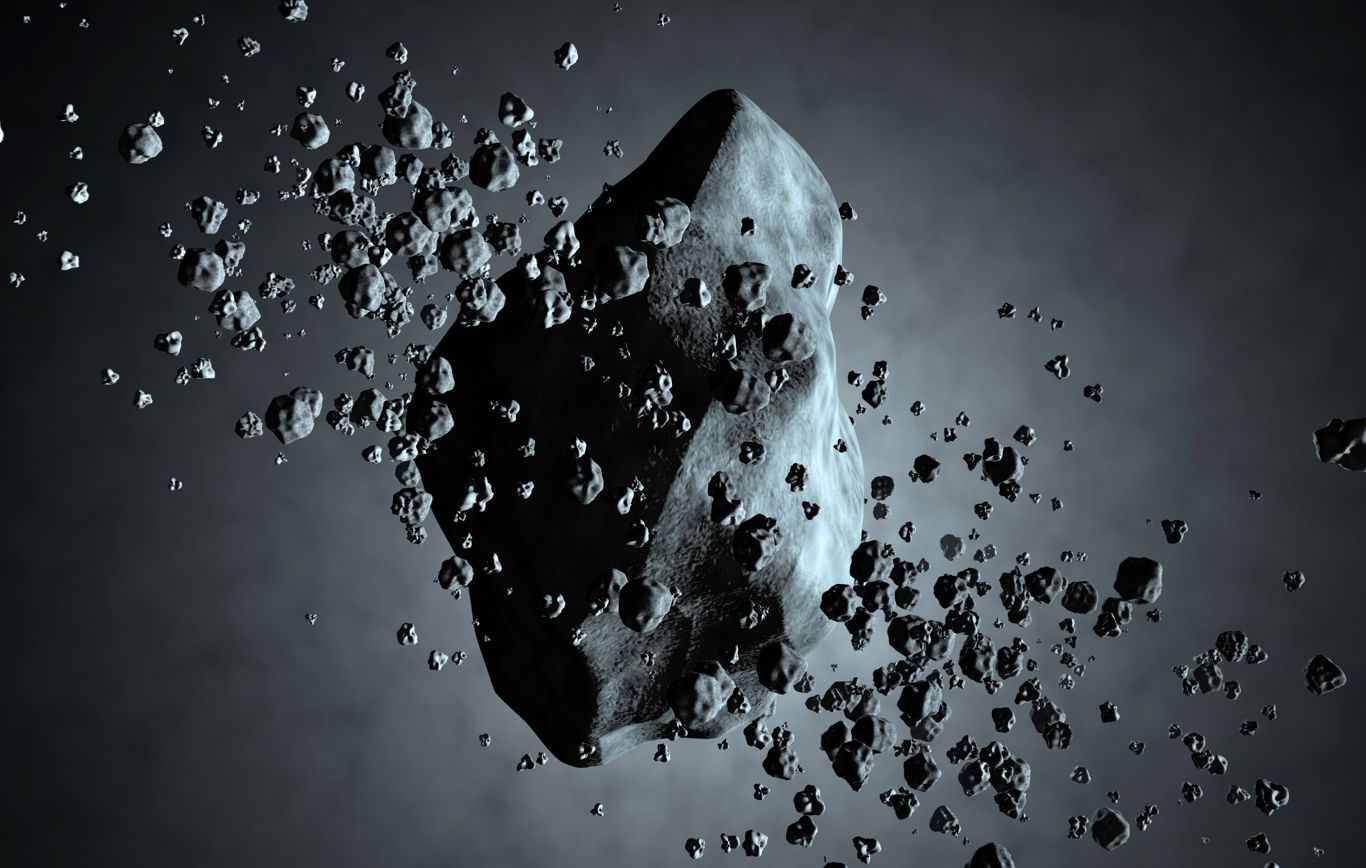
2023 a turning point for asteroid mining? (Image: Adobe)
One month gone already and we can already get a good idea of what to expect from the space industry through the year. In January, we have already seen the first attempted satellite launch from UK soil, Rocket Lab’s first US launch from the newly constructed Wallops site, and a wet dress rehearsal for the highly anticipated Starship launch. Much like the previous year, we expect a lot more to come in 2023.
We have also compiled our Annual Space Report 2022, and one key area of growth we identified for 2023 was a focus on asteroid and space mining. AstroForge, a company founded by former SpaceX and Virgin Galactic employees, announced last year that they intended on carrying out a demonstration of their technology early this year. They have this week seemingly followed through with the promise, announcing details of their first three missions. In April they intend on launching a CubeSat packed with asteroid-like material in order to demonstrate their onboard refining technology in the zero-gravity environment. Following this and later this year, they plan to launch with Intuitive Machine’s second mission, sending their spacecraft into cislunar orbit, where it will set-off on its 11-month journey to a relay with a target asteroid. In a third mission, date yet to be announced, they look to land on an asteroid, and a fourth mission will collect material and refine it, with the aim to bring refined platinum back to Earth.
To say that this sounds ambitious may be an understatement, but this reflects the nature of the space sector in these time. Only a few years ago many couldn’t imagine the possibility of landing and reusing rocket boosters over and over again. This week alone has given us evidence of a rapidly changing space sector.
Maiden launches and outer space exploration on the way
Innovation in rocket launches have changed the ways and means we use space, and this week we heard more news from Relativity Space, regarding the launch their 3D-printed, fully reusable Terran-R rocket, signing a deal with Impulse Space to make the first commercial mission to Mars by 2025. The rocket is also seen as a possible competitor to the industry workhorse, the SpaceX Falcon-9. Competition in this area could be another game-changer, especially considering the rapid development time (60 days) taken to build a Terran-R.
India are also planning a demo of their Reusable Launch Vehicle (RLV) this week, described as a two-stage-to-orbit vehicle. ISRO have ambitious designs on 2023, and in February also plan on launching a Small Satellite Launch Vehicle (SSLV) with 500kg capacity, and we also expect more to come from their flourishing private sector. Canada are also working to open up their commercial sector, and this week announced plans to establish a regulatory framework that will allow for commercial launches from the country.
As well as launch technology, spacecraft propulsion systems are critical to our plans for the using space-as-a-service, and exploring outer space. NASA and DARPA (US Defense Advanced Research Projects Agency) will be working together to develop a nuclear thermal propulsion (NTP) system, and plan on demonstrating the tech as soon as 2027. There has previously been a reluctance about using Nuclear propulsion for space travel, but it’s becoming a realisation that it may be the only option available in order facilitate travel to Mars and beyond.
As well as Starship, Astrobotic have also been carrying out testing on their Peregrine lunar lander this week, ahead of its integration with the ULA Vulcan rocket. No launch date has yet been assigned, but it understood that Intuitive Machines are lined up for their launch sometime in March, which has the chance opening up a commercial race to the moon with iSpace.
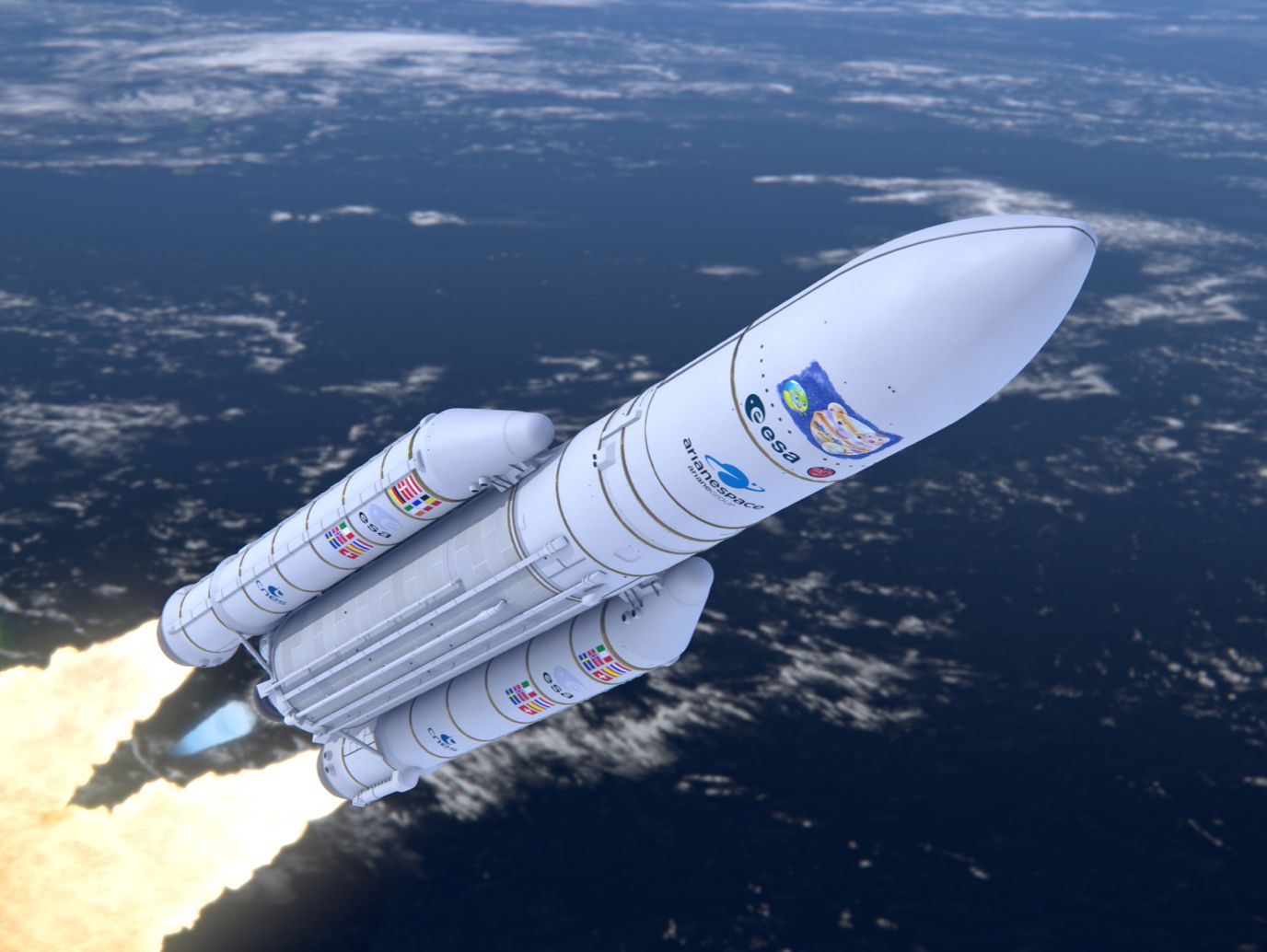
Iluustration of Ariane 5 (ESA/(acknowledgement: ATG Medialab)
European ambition, but lacking sovereign launch capability
ESA and European nations haven’t been quiet about their long-term goals. European non-dependency in relation to launch technology did however take a blow, with the failure of the Vega C launch in December, and delays facing the release of the Ariane 6. This week ESA head, Josef Aschbacher said that his “priority is to reinstall access to space, guaranteed access to space for Europe. And I will work on that in all dimensions.” Europe is of course also still reeling from the loss of access to Soyuz, and may find themselves, temporarily at least, sourcing launch capabilities from the US and SpaceX.
Yet there are moves being made in the European launch market. The UK is looking at the possibility of the first vertical rocket launch from British soil, as early as August. German company, German HyImpulse Technologies, will launch a suborbital rocket, and in October, Rocket Factory Augsburg are aiming to carry out a full orbital satellite launch from Scotland. In total the UK will establish 7 space launch sites, in Scotland, England and Wales. Another German rocket manufacturer, Isar Aerospace, have signed a deal with US launch services provider, Spaceflight, in order to carry out a launch in 2026. Isar are also planning the first test flight of their Spectrum rocket later this year.
This week ESA and the EU also announced the formation of the European space index, the first index used to measure the performance of European companies in the space sector. This may at least be an indication of the growth that lay ahead for the European commercial sector.
Europe’s JUICE mission also appears to be on track for an April launch. The mission is to send a satellite to explore three of Jupiter’s icy moons. The mission is due to be launched with one of the last two remaining Ariane 5 rockets, which very well highlights the situation Europe finds itself in at the moment.
Europe and the EU are also indicating that they plan to develop their legislative and space sustainability measures. The European Commission has warned against any kind of decentralisation in space, and are calling for single market approach to European space law, in order to establish a common framework on safety, security and sustainability. It’s unclear at this stage if the UK would be keen join these accords, not being a member of the EU, but still a member of ESA.
One thing that both the UK and EU might have in common though, are sustainability measures, with the UK in 2022 calling for an “Astra Carta” of space sustainability laws. On January 19th, Josef Aschbacher called for a “zero debris” policy approach to European space activities, and hoped that this could also be expanded globally. The policy would require that satellites are immediately de-orbited after their lifespan. It will be no simple task in having this policy universally accepted, but if left unattended, debris poses a threat that no nation or object is immune from. There are a number of projects and companies in Europe that are developing technology for debris removal, and this week, Swiss company ClearSpace announced that they have raised €27 million towards their “ClearSpace-1” mission, which they describe as “the world’s first space debris removal mission”.
Whilst Europe may be facing some issues relating to their launch capabilities, they still retain ambition in New Space, which was backed up by ESA’s record €16.9 billion budget in December.
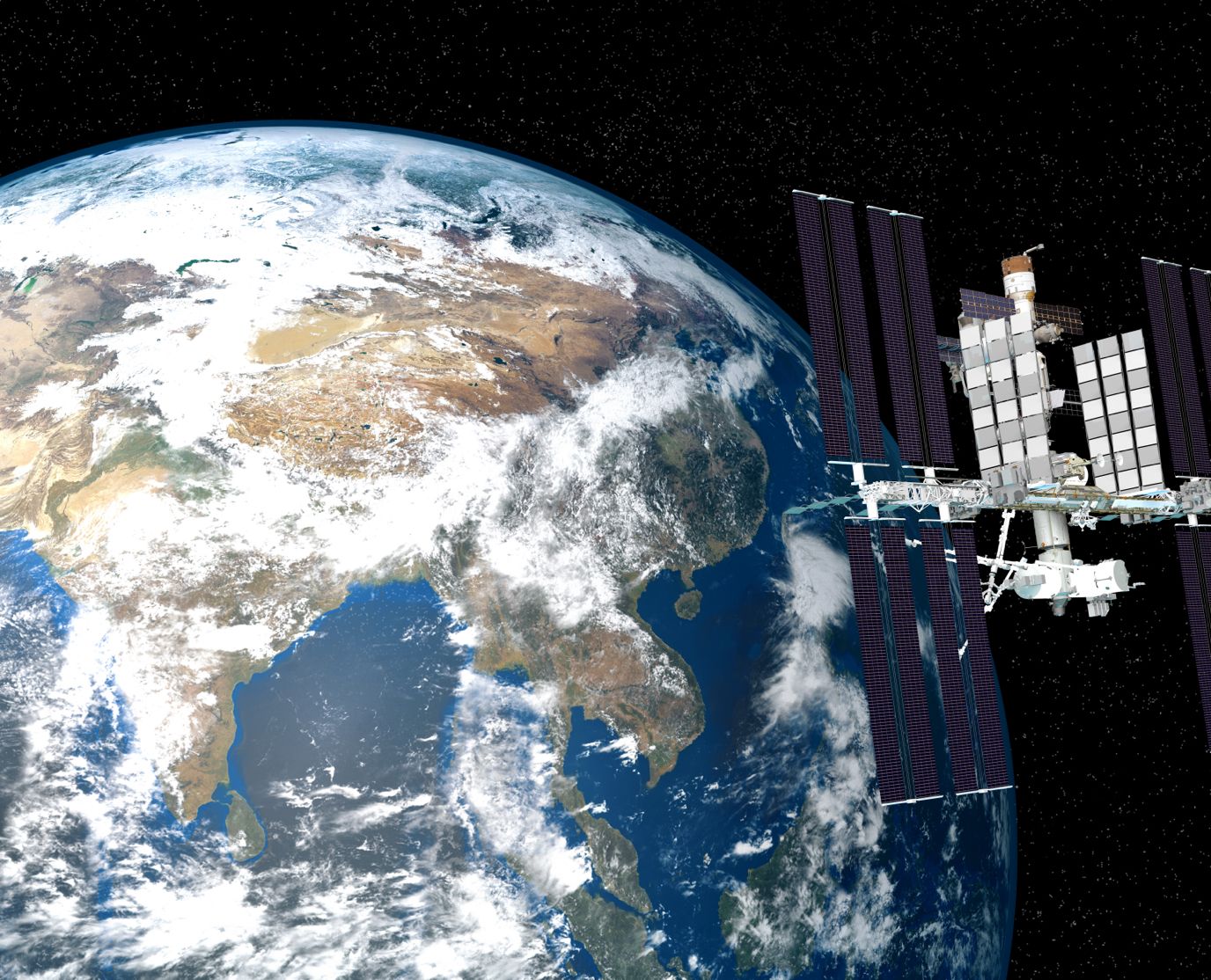
ESA will remain committed to ISS, but not Tiangong (Image: Adobe)
Geopolitics still influencing international space relations
Geopolitics has been reshaping the state of the space sector, and relationships in New Space are changing. Whilst ESA and European nations have cut ties with Roscosmos, and have ended projects such as ExoMars, it seemed that ESA might be in a position to bridge the widening gap between China and the US. European nations had projects lined up to be carried out on China’s new Tiangong space station, and ESA has been working on instruments to be sent of China’s Chang’e-6 lunar mission.
However, it now seems that ESA will no longer be sending astronauts to Tiangong. “For the moment we have neither the budgetary nor the political, let’s say, green light or intention to engage in a second space station; that is participating on the Chinese space station,” Josef Aschbacher said. Whether this is due to the strained relations between China and Europe, we don’t know. Nevertheless, it appears that Europe might be drifting away from its potential role as a mediator between the superpowers of the US and China. Perhaps in 2023, this role might be assigned to a newer space nation, such as the UAE.
Russia does appear to be making steps to forge new relations in space. Roscosmos General Director Yuri Borisov said on Tuesday that they are considering creating international satellite constellations with friendly countries, and also planned a trip to China in February. This may be an encouraging sign of Russia still looking to cooperate in space, but it is to be determined who they refer to when they say “friendly nations”. The recent announcement from the UK, Germany, the US and others regarding sending armaments to Ukraine may further degrade relations in space. For now at least, cooperation continues on the ISS.
This remaining symbol of cooperation must not be taken for granted. Since the invasion of Ukraine last year, we have seen space come closer to the sphere of warfare, as satellite imaging and communications have played a key role in the conflict. This week, US Space Command have highlighted problems with their military satellites, citing limited manoeuvrability as an issue. The satellites were designed to carry out minimum manoeuvres, and preserve fuel, but now rival satellites may be outperforming them. The solution may be that newer and smaller satellites are sourced, and that the government takes a closer look at technologies supporting in-orbit refuelling, like that from US company, Orbit Fab. Of course, this would be positive news for an already thriving industry. However, one thing it does tell us, is that we still long for rules that will maintain peace in outer space. In 2022 we regularly noted how innovation is rapidly outpacing legislative development. In 2023, we risk continuing this trend.
External Links
This Week
*News articles posted here are not property of ANASDA GmbH and belong to their respected owners. Postings here are external links only.
Our future in space
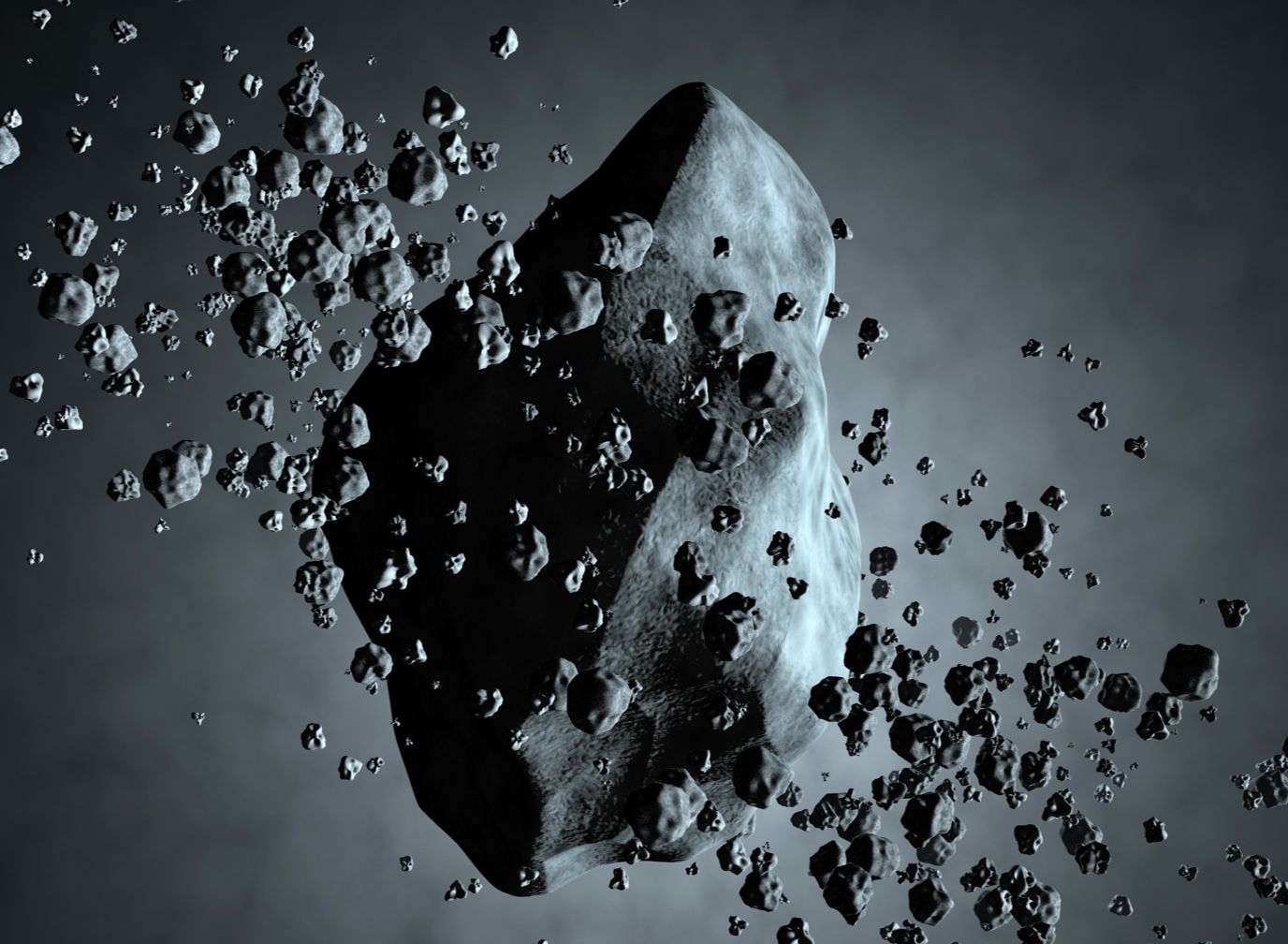
2023 a turning point for asteroid mining? (Image: Adobe)
27 January 2023
Milestone for commercial lunar exploration and space mining, but relations continue to fray
One month gone already and we can already get a good idea of what to expect from the space industry through the year. In January, we have already seen the first attempted satellite launch from UK soil, Rocket Lab’s first US launch from the newly constructed Wallops site, and a wet dress rehearsal for the highly anticipated Starship launch. Much like the previous year, we expect a lot more to come in 2023.
We have also compiled our Annual Space Report 2022, and one key area of growth we identified for 2023 was a focus on asteroid and space mining. AstroForge, a company founded by former SpaceX and Virgin Galactic employees, announced last year that they intended on carrying out a demonstration of their technology early this year. They have this week seemingly followed through with the promise, announcing details of their first three missions. In April they intend on launching a CubeSat packed with asteroid-like material in order to demonstrate their onboard refining technology in the zero-gravity environment. Following this and later this year, they plan to launch with Intuitive Machine’s second mission, sending their spacecraft into cislunar orbit, where it will set-off on its 11-month journey to a relay with a target asteroid. In a third mission, date yet to be announced, they look to land on an asteroid, and a fourth mission will collect material and refine it, with the aim to bring refined platinum back to Earth.
To say that this sounds ambitious may be an understatement, but this reflects the nature of the space sector in these time. Only a few years ago many couldn’t imagine the possibility of landing and reusing rocket boosters over and over again. This week alone has given us evidence of a rapidly changing space sector.
Maiden launches and outer space exploration on the way
Innovation in rocket launches have changed the ways and means we use space, and this week we heard more news from Relativity Space, regarding the launch their 3D-printed, fully reusable Terran-R rocket, signing a deal with Impulse Space to make the first commercial mission to Mars by 2025. The rocket is also seen as a possible competitor to the industry workhorse, the SpaceX Falcon-9. Competition in this area could be another game-changer, especially considering the rapid development time (60 days) taken to build a Terran-R.
India are also planning a demo of their Reusable Launch Vehicle (RLV) this week, described as a two-stage-to-orbit vehicle. ISRO have ambitious designs on 2023, and in February also plan on launching a Small Satellite Launch Vehicle (SSLV) with 500kg capacity, and we also expect more to come from their flourishing private sector. Canada are also working to open up their commercial sector, and this week announced plans to establish a regulatory framework that will allow for commercial launches from the country.
As well as launch technology, spacecraft propulsion systems are critical to our plans for the using space-as-a-service, and exploring outer space. NASA and DARPA (US Defense Advanced Research Projects Agency) will be working together to develop a nuclear thermal propulsion (NTP) system, and plan on demonstrating the tech as soon as 2027. There has previously been a reluctance about using Nuclear propulsion for space travel, but it’s becoming a realisation that it may be the only option available in order facilitate travel to Mars and beyond.
As well as Starship, Astrobotic have also been carrying out testing on their Peregrine lunar lander this week, ahead of its integration with the ULA Vulcan rocket. No launch date has yet been assigned, but it understood that Intuitive Machines are lined up for their launch sometime in March, which has the chance opening up a commercial race to the moon with iSpace.
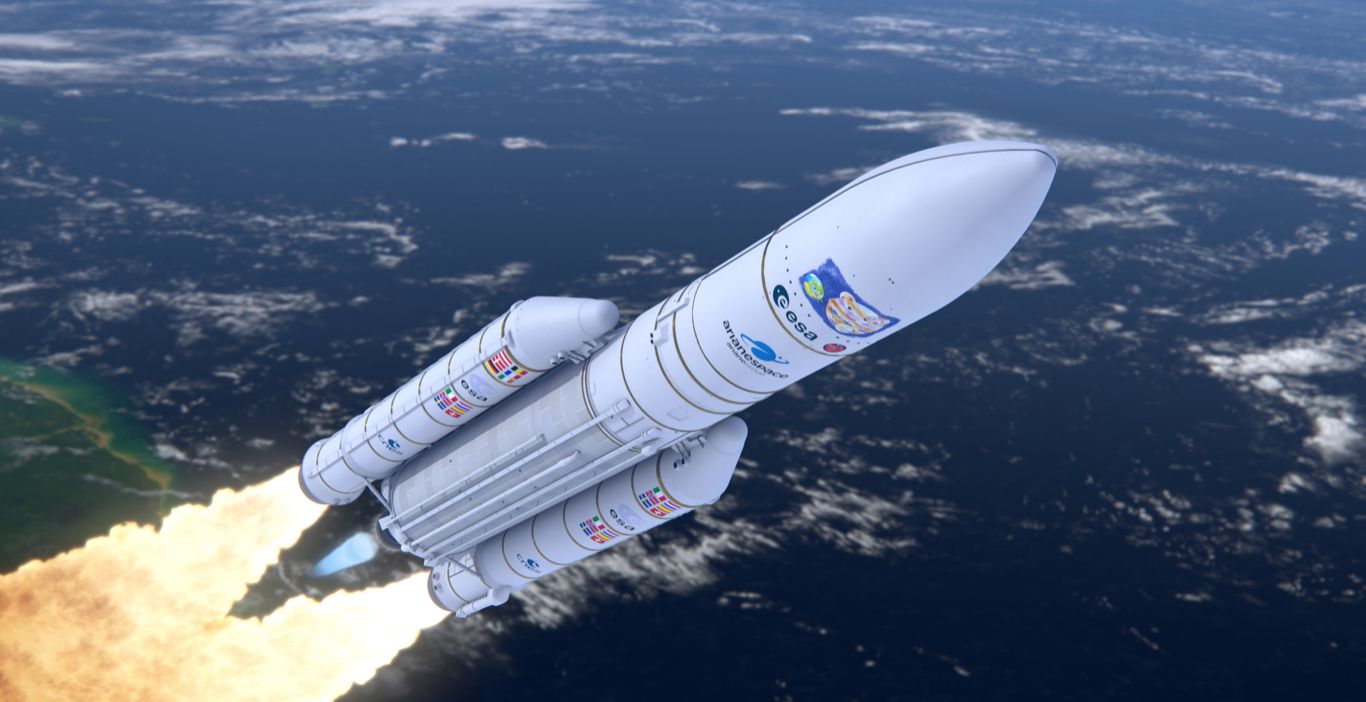
Iluustration of Ariane 5 (ESA/(acknowledgement: ATG Medialab)
European ambition, but lacking sovereign launch capability
ESA and European nations haven’t been quiet about their long-term goals. European non-dependency in relation to launch technology did however take a blow, with the failure of the Vega C launch in December, and delays facing the release of the Ariane 6. This week ESA head, Josef Aschbacher said that his “priority is to reinstall access to space, guaranteed access to space for Europe. And I will work on that in all dimensions.” Europe is of course also still reeling from the loss of access to Soyuz, and may find themselves, temporarily at least, sourcing launch capabilities from the US and SpaceX.
Yet there are moves being made in the European launch market. The UK is looking at the possibility of the first vertical rocket launch from British soil, as early as August. German company, German HyImpulse Technologies, will launch a suborbital rocket, and in October, Rocket Factory Augsburg are aiming to carry out a full orbital satellite launch from Scotland. In total the UK will establish 7 space launch sites, in Scotland, England and Wales. Another German rocket manufacturer, Isar Aerospace, have signed a deal with US launch services provider, Spaceflight, in order to carry out a launch in 2026. Isar are also planning the first test flight of their Spectrum rocket later this year.
This week ESA and the EU also announced the formation of the European space index, the first index used to measure the performance of European companies in the space sector. This may at least be an indication of the growth that lay ahead for the European commercial sector.
Europe’s JUICE mission also appears to be on track for an April launch. The mission is to send a satellite to explore three of Jupiter’s icy moons. The mission is due to be launched with one of the last two remaining Ariane 5 rockets, which very well highlights the situation Europe finds itself in at the moment.
Europe and the EU are also indicating that they plan to develop their legislative and space sustainability measures. The European Commission has warned against any kind of decentralisation in space, and are calling for single market approach to European space law, in order to establish a common framework on safety, security and sustainability. It’s unclear at this stage if the UK would be keen join these accords, not being a member of the EU, but still a member of ESA.
One thing that both the UK and EU might have in common though, are sustainability measures, with the UK in 2022 calling for an “Astra Carta” of space sustainability laws. On January 19th, Josef Aschbacher called for a “zero debris” policy approach to European space activities, and hoped that this could also be expanded globally. The policy would require that satellites are immediately de-orbited after their lifespan. It will be no simple task in having this policy universally accepted, but if left unattended, debris poses a threat that no nation or object is immune from. There are a number of projects and companies in Europe that are developing technology for debris removal, and this week, Swiss company ClearSpace announced that they have raised €27 million towards their “ClearSpace-1” mission, which they describe as “the world’s first space debris removal mission”.
Whilst Europe may be facing some issues relating to their launch capabilities, they still retain ambition in New Space, which was backed up by ESA’s record €16.9 billion budget in December.
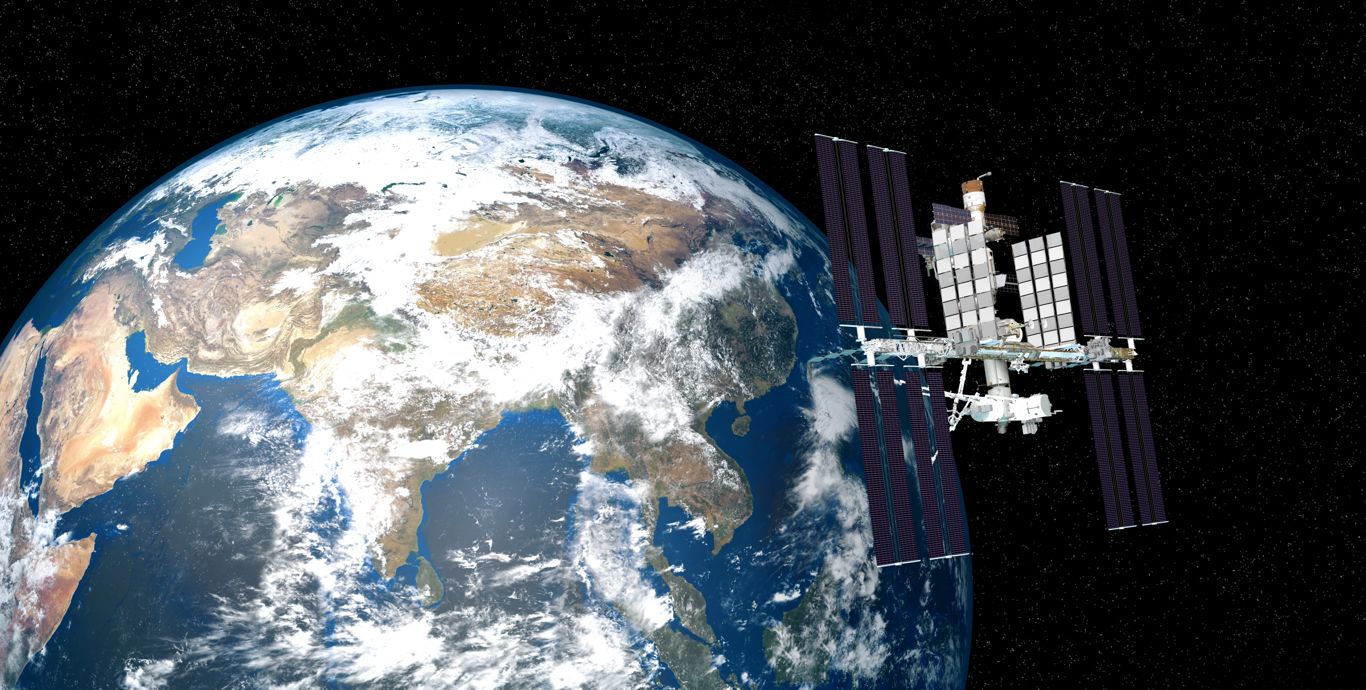
ESA will remain committed to ISS, but not Tiangong (Image: Adobe)
Geopolitics still influencing international space relations
Geopolitics has been reshaping the state of the space sector, and relationships in New Space are changing. Whilst ESA and European nations have cut ties with Roscosmos, and have ended projects such as ExoMars, it seemed that ESA might be in a position to bridge the widening gap between China and the US. European nations had projects lined up to be carried out on China’s new Tiangong space station, and ESA has been working on instruments to be sent of China’s Chang’e-6 lunar mission.
However, it now seems that ESA will no longer be sending astronauts to Tiangong. “For the moment we have neither the budgetary nor the political, let’s say, green light or intention to engage in a second space station; that is participating on the Chinese space station,” Josef Aschbacher said. Whether this is due to the strained relations between China and Europe, we don’t know. Nevertheless, it appears that Europe might be drifting away from its potential role as a mediator between the superpowers of the US and China. Perhaps in 2023, this role might be assigned to a newer space nation, such as the UAE.
Russia does appear to be making steps to forge new relations in space. Roscosmos General Director Yuri Borisov said on Tuesday that they are considering creating international satellite constellations with friendly countries, and also planned a trip to China in February. This may be an encouraging sign of Russia still looking to cooperate in space, but it is to be determined who they refer to when they say “friendly nations”. The recent announcement from the UK, Germany, the US and others regarding sending armaments to Ukraine may further degrade relations in space. For now at least, cooperation continues on the ISS.
This remaining symbol of cooperation must not be taken for granted. Since the invasion of Ukraine last year, we have seen space come closer to the sphere of warfare, as satellite imaging and communications have played a key role in the conflict. This week, US Space Command have highlighted problems with their military satellites, citing limited manoeuvrability as an issue. The satellites were designed to carry out minimum manoeuvres, and preserve fuel, but now rival satellites may be outperforming them. The solution may be that newer and smaller satellites are sourced, and that the government takes a closer look at technologies supporting in-orbit refuelling, like that from US company, Orbit Fab. Of course, this would be positive news for an already thriving industry. However, one thing it does tell us, is that we still long for rules that will maintain peace in outer space. In 2022 we regularly noted how innovation is rapidly outpacing legislative development. In 2023, we risk continuing this trend.
Share this article
External Links
This Week
*News articles posted here are not property of ANASDA GmbH and belong to their respected owners. Postings here are external links only.
27 Jan 2023
Milestone for commercial lunar exploration and space mining, but relations continue to fray
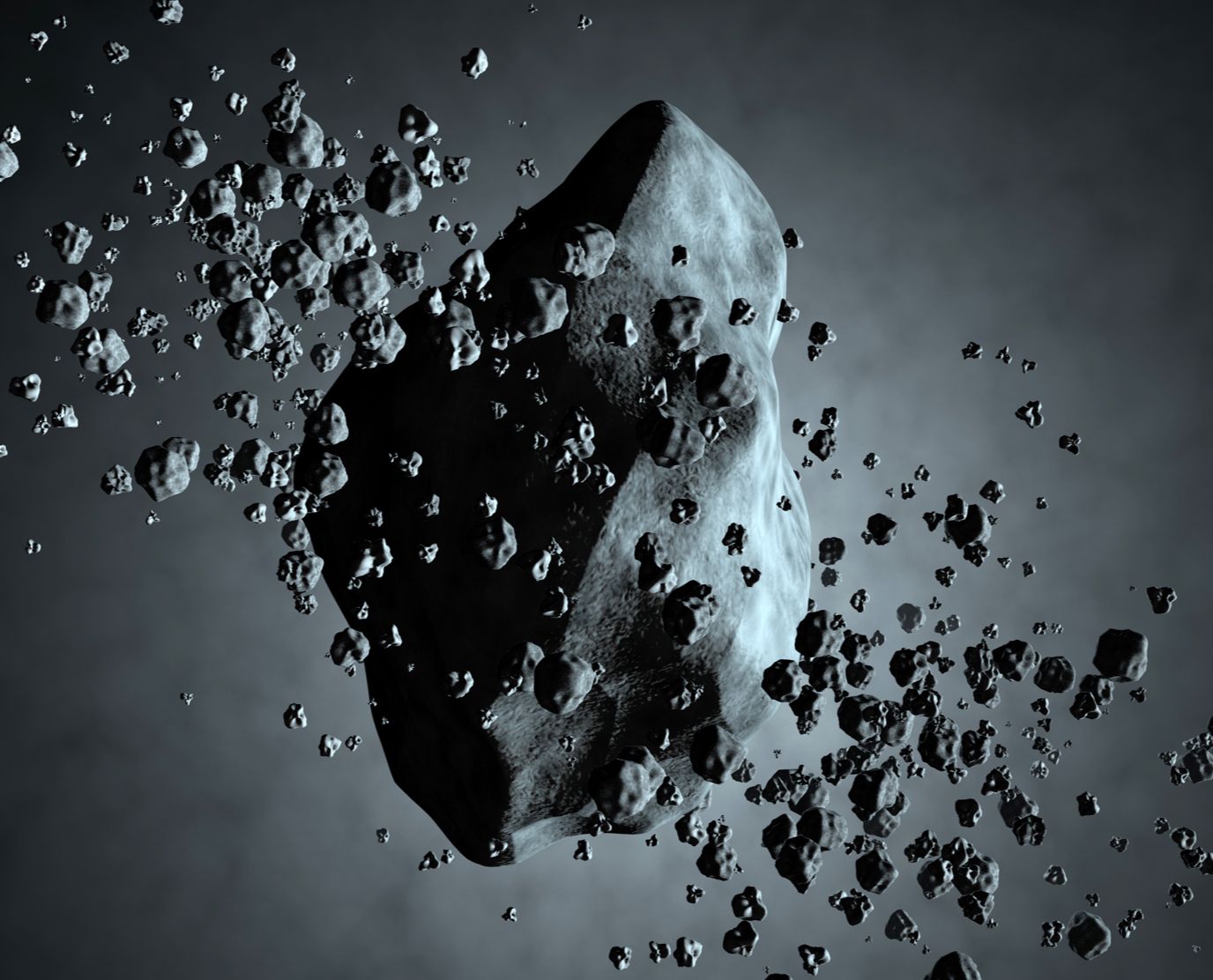
2023 a turning point for asteroid mining? (Image: Adobe)
One month gone already and we can already get a good idea of what to expect from the space industry through the year. In January, we have already seen the first attempted satellite launch from UK soil, Rocket Lab’s first US launch from the newly constructed Wallops site, and a wet dress rehearsal for the highly anticipated Starship launch. Much like the previous year, we expect a lot more to come in 2023.
We have also compiled our Annual Space Report 2022, and one key area of growth we identified for 2023 was a focus on asteroid and space mining. AstroForge, a company founded by former SpaceX and Virgin Galactic employees, announced last year that they intended on carrying out a demonstration of their technology early this year. They have this week seemingly followed through with the promise, announcing details of their first three missions. In April they intend on launching a CubeSat packed with asteroid-like material in order to demonstrate their onboard refining technology in the zero-gravity environment. Following this and later this year, they plan to launch with Intuitive Machine’s second mission, sending their spacecraft into cislunar orbit, where it will set-off on its 11-month journey to a relay with a target asteroid. In a third mission, date yet to be announced, they look to land on an asteroid, and a fourth mission will collect material and refine it, with the aim to bring refined platinum back to Earth.
To say that this sounds ambitious may be an understatement, but this reflects the nature of the space sector in these time. Only a few years ago many couldn’t imagine the possibility of landing and reusing rocket boosters over and over again. This week alone has given us evidence of a rapidly changing space sector.
Maiden launches and outer space exploration on the way
Innovation in rocket launches have changed the ways and means we use space, and this week we heard more news from Relativity Space, regarding the launch their 3D-printed, fully reusable Terran-R rocket, signing a deal with Impulse Space to make the first commercial mission to Mars by 2025. The rocket is also seen as a possible competitor to the industry workhorse, the SpaceX Falcon-9. Competition in this area could be another game-changer, especially considering the rapid development time (60 days) taken to build a Terran-R.
India are also planning a demo of their Reusable Launch Vehicle (RLV) this week, described as a two-stage-to-orbit vehicle. ISRO have ambitious designs on 2023, and in February also plan on launching a Small Satellite Launch Vehicle (SSLV) with 500kg capacity, and we also expect more to come from their flourishing private sector. Canada are also working to open up their commercial sector, and this week announced plans to establish a regulatory framework that will allow for commercial launches from the country.
As well as launch technology, spacecraft propulsion systems are critical to our plans for the using space-as-a-service, and exploring outer space. NASA and DARPA (US Defense Advanced Research Projects Agency) will be working together to develop a nuclear thermal propulsion (NTP) system, and plan on demonstrating the tech as soon as 2027. There has previously been a reluctance about using Nuclear propulsion for space travel, but it’s becoming a realisation that it may be the only option available in order facilitate travel to Mars and beyond.
As well as Starship, Astrobotic have also been carrying out testing on their Peregrine lunar lander this week, ahead of its integration with the ULA Vulcan rocket. No launch date has yet been assigned, but it understood that Intuitive Machines are lined up for their launch sometime in March, which has the chance opening up a commercial race to the moon with iSpace.
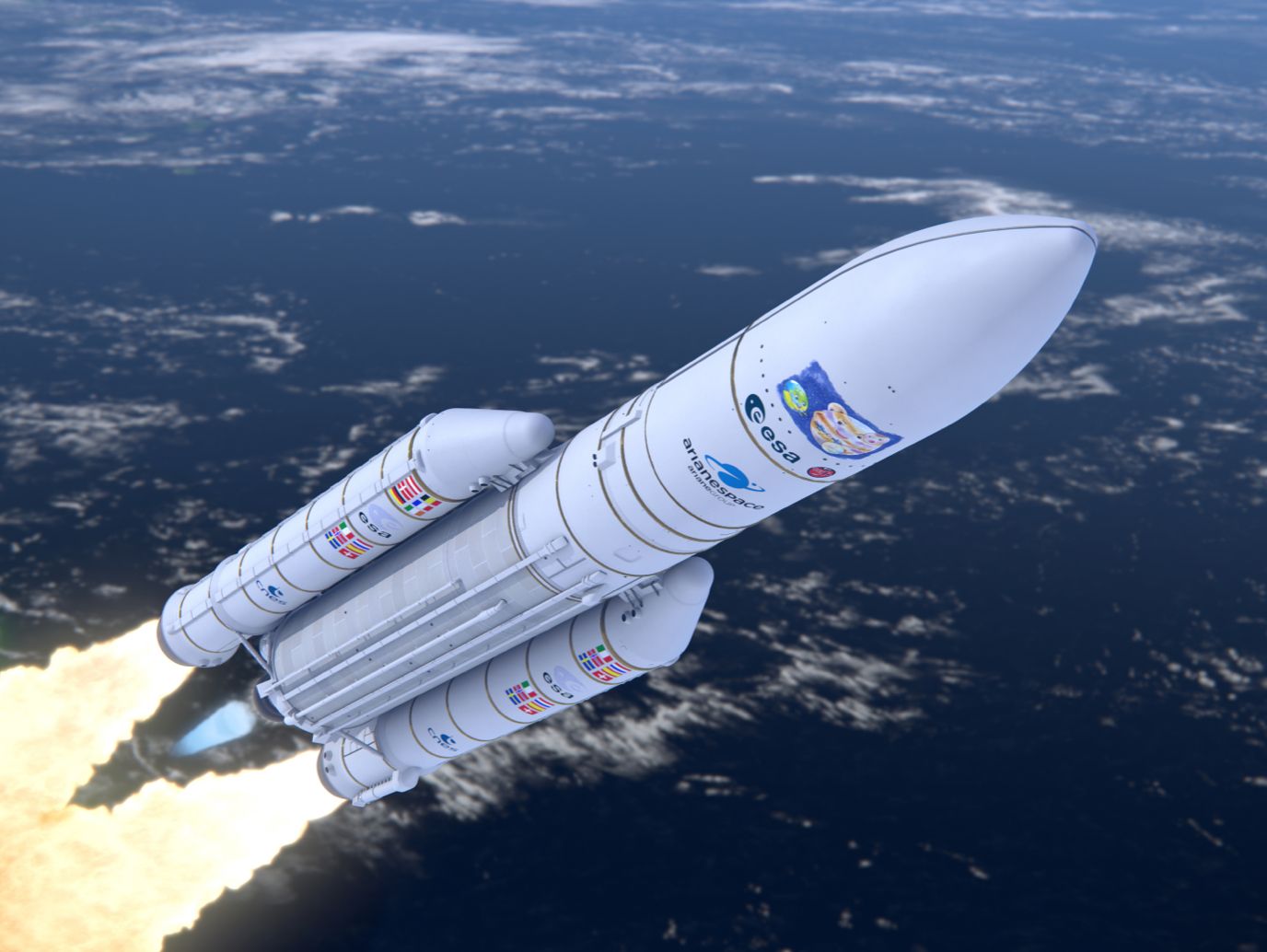
Iluustration of Ariane 5 (ESA/(acknowledgement: ATG Medialab))
European ambition, but lacking sovereign launch capability
ESA and European nations haven’t been quiet about their long-term goals. European non-dependency in relation to launch technology did however take a blow, with the failure of the Vega C launch in December, and delays facing the release of the Ariane 6. This week ESA head, Josef Aschbacher said that his “priority is to reinstall access to space, guaranteed access to space for Europe. And I will work on that in all dimensions.” Europe is of course also still reeling from the loss of access to Soyuz, and may find themselves, temporarily at least, sourcing launch capabilities from the US and SpaceX.
Yet there are moves being made in the European launch market. The UK is looking at the possibility of the first vertical rocket launch from British soil, as early as August. German company, German HyImpulse Technologies, will launch a suborbital rocket, and in October, Rocket Factory Augsburg are aiming to carry out a full orbital satellite launch from Scotland. In total the UK will establish 7 space launch sites, in Scotland, England and Wales. Another German rocket manufacturer, Isar Aerospace, have signed a deal with US launch services provider, Spaceflight, in order to carry out a launch in 2026. Isar are also planning the first test flight of their Spectrum rocket later this year.
This week ESA and the EU also announced the formation of the European space index, the first index used to measure the performance of European companies in the space sector. This may at least be an indication of the growth that lay ahead for the European commercial sector.
Europe’s JUICE mission also appears to be on track for an April launch. The mission is to send a satellite to explore three of Jupiter’s icy moons. The mission is due to be launched with one of the last two remaining Ariane 5 rockets, which very well highlights the situation Europe finds itself in at the moment.
Europe and the EU are also indicating that they plan to develop their legislative and space sustainability measures. The European Commission has warned against any kind of decentralisation in space, and are calling for single market approach to European space law, in order to establish a common framework on safety, security and sustainability. It’s unclear at this stage if the UK would be keen join these accords, not being a member of the EU, but still a member of ESA.
One thing that both the UK and EU might have in common though, are sustainability measures, with the UK in 2022 calling for an “Astra Carta” of space sustainability laws. On January 19th, Josef Aschbacher called for a “zero debris” policy approach to European space activities, and hoped that this could also be expanded globally. The policy would require that satellites are immediately de-orbited after their lifespan. It will be no simple task in having this policy universally accepted, but if left unattended, debris poses a threat that no nation or object is immune from. There are a number of projects and companies in Europe that are developing technology for debris removal, and this week, Swiss company ClearSpace announced that they have raised €27 million towards their “ClearSpace-1” mission, which they describe as “the world’s first space debris removal mission”.
Whilst Europe may be facing some issues relating to their launch capabilities, they still retain ambition in New Space, which was backed up by ESA’s record €16.9 billion budget in December.
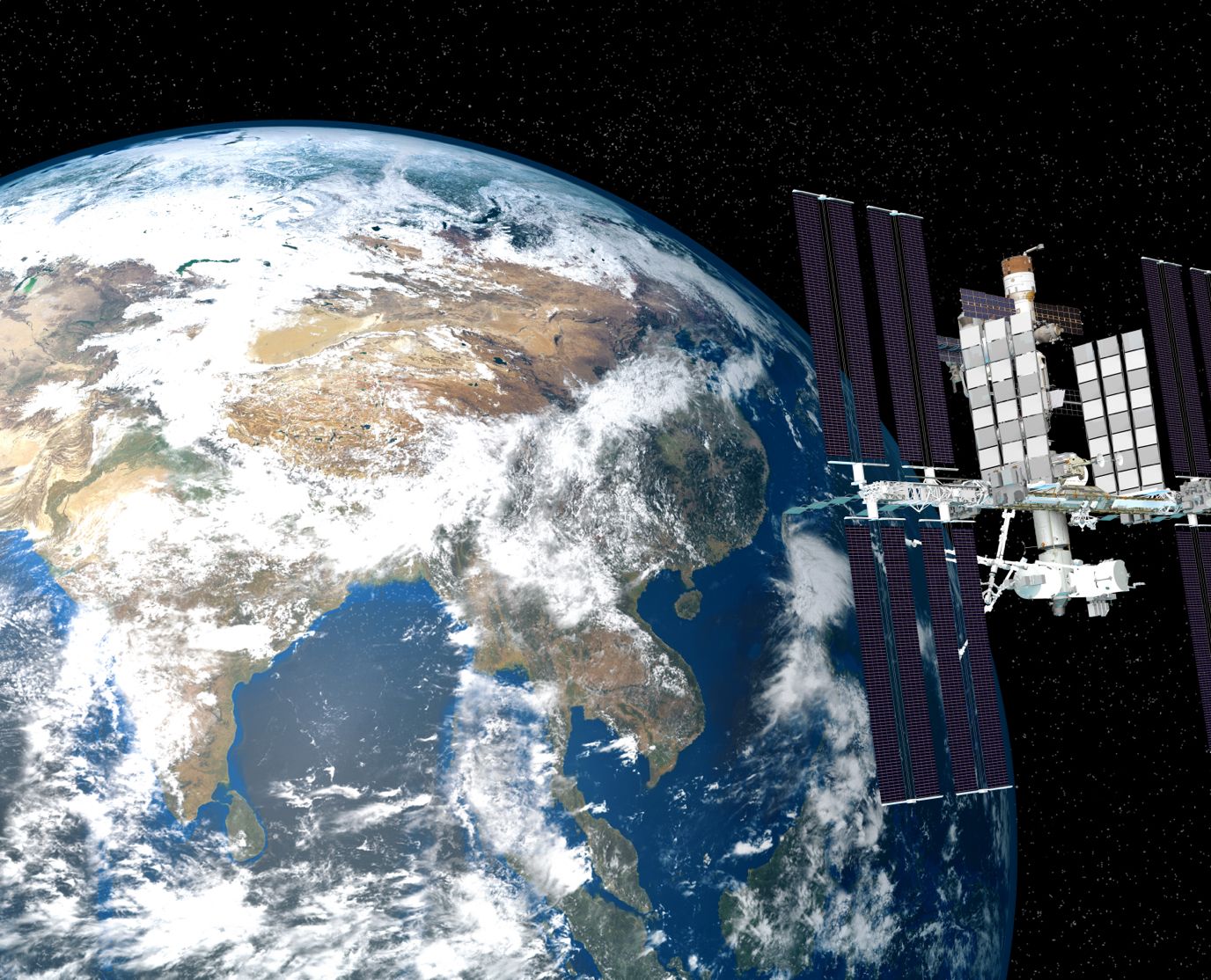
ESA will remain committed to ISS, but not Tiangong (Image: Adobe)
Geopolitics still influencing international space relations
Geopolitics has been reshaping the state of the space sector, and relationships in New Space are changing. Whilst ESA and European nations have cut ties with Roscosmos, and have ended projects such as ExoMars, it seemed that ESA might be in a position to bridge the widening gap between China and the US. European nations had projects lined up to be carried out on China’s new Tiangong space station, and ESA has been working on instruments to be sent of China’s Chang’e-6 lunar mission.
However, it now seems that ESA will no longer be sending astronauts to Tiangong. “For the moment we have neither the budgetary nor the political, let’s say, green light or intention to engage in a second space station; that is participating on the Chinese space station,” Josef Aschbacher said. Whether this is due to the strained relations between China and Europe, we don’t know. Nevertheless, it appears that Europe might be drifting away from its potential role as a mediator between the superpowers of the US and China. Perhaps in 2023, this role might be assigned to a newer space nation, such as the UAE.
Russia does appear to be making steps to forge new relations in space. Roscosmos General Director Yuri Borisov said on Tuesday that they are considering creating international satellite constellations with friendly countries, and also planned a trip to China in February. This may be an encouraging sign of Russia still looking to cooperate in space, but it is to be determined who they refer to when they say “friendly nations”. The recent announcement from the UK, Germany, the US and others regarding sending armaments to Ukraine may further degrade relations in space. For now at least, cooperation continues on the ISS.
This remaining symbol of cooperation must not be taken for granted. Since the invasion of Ukraine last year, we have seen space come closer to the sphere of warfare, as satellite imaging and communications have played a key role in the conflict. This week, US Space Command have highlighted problems with their military satellites, citing limited manoeuvrability as an issue. The satellites were designed to carry out minimum manoeuvres, and preserve fuel, but now rival satellites may be outperforming them. The solution may be that newer and smaller satellites are sourced, and that the government takes a closer look at technologies supporting in-orbit refuelling, like that from US company, Orbit Fab. Of course, this would be positive news for an already thriving industry. However, one thing it does tell us, is that we still long for rules that will maintain peace in outer space. In 2022 we regularly noted how innovation is rapidly outpacing legislative development. In 2023, we risk continuing this trend.
Share this article
External Links
This Week
*News articles posted here are not property of ANASDA GmbH and belong to their respected owners. Postings here are external links only.


















